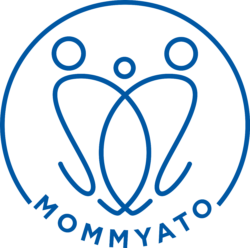28 Jul Preventing Mastitis When Breastfeeding
Effective, frequent nursing speeds the recovery of clogged milk ducts and mastitis. The antibacterial qualities of breastmilk prevent the baby from getting an infection related to an inflamed or infected breast.
The first week of August is World Alliance for Breastfeeding Action (WABA) week, which brings awareness to the protection, support and benefits of breastfeeding. In honor of this agenda, it’s important to dig into the challenges of breastfeeding, specifically mastitis.
Mastitis is one of the most common problems related to breastfeeding. It usually begins with a clogged milk duct that leads to inflammation of the breast tissue and sometimes an infection of the breast.
How to Prevent Mastitis While Breastfeeding
When breast milk stops flowing in the breast, bacteria starts to grow in the area where there is a plug. This can happen when there is a change in the pattern of breastfeeding, like when your baby is teething, sick, or begins to sleep through the night. Skipped feedings and oversupply are risk factors for mastitis. Milk sits in the milk ducts and can cause engorgement (enlargement, swelling and tightness of the breast). If engorgement isn’t relieved by nursing your baby or expressing milk by hand or with a breast pump, clogged ducts can occur.¹
Another common reason for clogged milk ducts that leads to mastitis is poor latch and incomplete emptying of the breast. Mastitis most often occurs in the first 2-3 weeks of your baby’s infancy. So, in these early weeks, establish healthy breast milk production with a regular supply/demand schedule by feeding your baby 8-12 times a day. Ensure good breastfeeding techniques by practicing a good latch and rotating the nursing position of your baby so their chin and nose alternate positions on your nipple. If you’re not sure how to do this, enlist the help of a professional lactation consultant.
A mother’s chronic fatigue and/or a diet high in salt or saturated fats are known risk factors with recurrent mastitis. If a breast infection occurs repeatedly, this can lead to scarring of the milk ducts, which can impact breast milk production in future pregnancies.²
If mastitis isn’t treated promptly, it can lead to a breast abscess or sepsis, which is an infection that involves your whole body, including other organ systems. So, it’s a good idea to contact your healthcare provider right after you notice the first signs of breast inflammation or infection.
What are the Symptoms and Treatment of Mastitis?
Mastitis is a tender, hot, swollen, wedge shaped area of the breast often associated with fever, chills, body aches, and flu-like symptoms. An infection may or may not include redness of the breast or hard, sore lumps.¹
You should call your healthcare provider immediately if you are breastfeeding and have any of these symptoms. While you are waiting to be seen by your provider, there are many actions you can take to relieve a clogged milk duct, which is usually the cause of mastitis.
- Nurse your baby frequently on the affected breast. Check for a good latch and rotate your baby’s positions to ensure complete and effective emptying of the breast.
- Ensure the affected breast is soft to touch and empty after breastfeeding.
- Apply wet or dry warm compresses frequently.
- Massage the breast, particularly the area above the tender spot and hand express milk behind the nipple. This is best done after a warm shower, warm compresses, or soaking the breast while leaning over a basin of warm water.
- Go braless for a few days to encourage milk and lymph flow. Avoid tight, restrictive tops.
- For mastitis, apply cabbage leaves to breasts. Cabbage has anti-inflammatory properties and can help with tenderness and swelling. Wash leaves, use room temperature or chilled leaves, twice a day for 20 minutes at a time, until inflammation resolves.
- Decrease saturated fat and salt from your diet. Consider adding 1 tbsp. of Lecithin to your diet every day (This is theorized to help the milk hold onto fat globules rather than getting trapped in milk ducts).
- Get plenty of rest.
Remember, one of the best ways to reduce the risk of mastitis is to nurse your baby frequently and avoid skipping feedings and consequently, engorgement and plugged ducts. If it’s too painful to nurse on the affected breast, nurse from the unaffected breast but open your bra to allow the milk flow from the affected breast too. You can let it flow on a towel or in a cup.
If you’re prescribed antibiotics for mastitis by your provider, be sure to take the whole course, usually 10-14 days of medication. Stopping the medication early could cause the infection to resume, which will just prolong the overall infection and interrupt nursing. Milk from an infected breast may taste “salty” to your baby and she may refuse, in which case, you should pump or hand express the milk frequently. Getting the milk flowing is a necessity to healing mastitis.
Be sure to check out the Mommyato Library section on breastfeeding concerns.
REFERENCES:
- American Academy of Pediatrics (AAP). November 2009. Mastitis. https://www.healthychildren.org/English/ages-stages/baby/breastfeeding/Pages/Mastitis.aspx
- The American College of Obstetricians and Gynecologists (ACOG). February 2021. Breastfeeding challenges. https://www.acog.org/clinical/clinical-guidance/committee-opinion/articles/2021/02/breastfeeding-challenges



